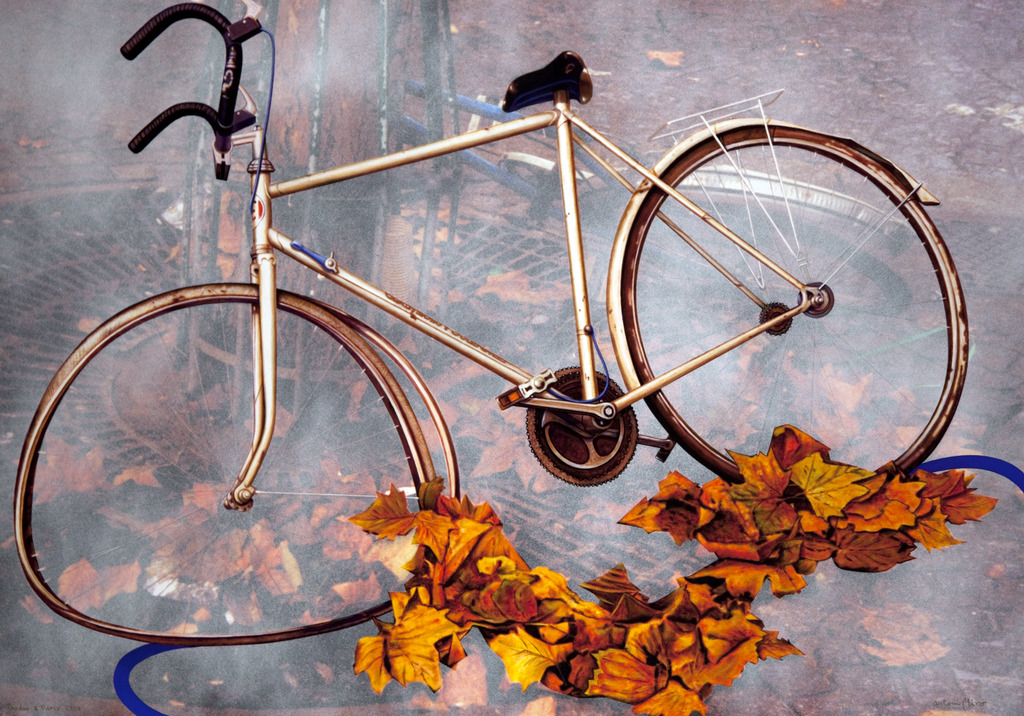Tardor a París (Autumn in Paris)
As a metaphorical foundation, Miró uses bicycles, those ‘heavenly’ vehicles — as José María Iglesias put it —, to illustrate diverse ideas. The commonest — frequently found in the “Vivace” series — involves highlighting the lightness of bicycles (in both material and formal terms), and the sustainability of their use, as a means to referring to a kind of environmental paradigm. Miró constructs these machines in a two-fold process of idealisation and hybridisation. On the one hand, Miró makes the bikes more sophisticated and streamlines them. And, on the other hand, they are complemented with various objects to give them new, different communicative capabilities.
In this case, much earlier than the aforementioned series, what happens is nevertheless quite different. What we see here in the foreground is a ramshackle bicycle with a metallised beige frame. There is no shadow of a bike’s symbolic potential as a respectful object towards the environment. Instead, we see an artefact that has been forgotten, leaning on a tree trunk on a street. There is a blue one behind, which seems forgotten as well.
In the picture, reality is not transformed through real or figurative resources that might offer new interpretative perspectives. The work is pictorially enriched by the melancholy typical of Autumn. The title points at this season as the season of a particular city, Paris. The artist seeks to immortalise his feelings on a visit he made to that city during that season, which he captured in a photograph. The treatment is subtle and to some extent is similar to the “reactivation of the past” in the sense meant by Fernando Castro in referring to revisitations of art history. In this case, the “way of shaping worlds” Castro speaks of seems to depart from a metropolitan reality that, while casually explicit, requires a certain sensitivity if it is to be captured.
It is also true that this work does not express conflict but is rather an expressive evocation of a mood. It appeals to the nostalgia of a better past, with an aesthetic treatment of what is now useless (the bike has no chain, its tires are punctured...) and remains as a mechanical wreck. This ties in nicely with the concept of Autumn.
The representational exercise involves keeping the background out of focus with the ancillary elements that are part of the original image. Two motifs are highlighted on this base: the bicycle and the dry leaves of Autumn, both being painted in great detail. Miró minutely depicts what has become obsolete and, in so doing, renders homage to it. The two main motifs are complemented by the shadows of the wheels, which are painted in an intense blue and are incorporated as a stroke that is alien to the base scene.
Santiago Pastor Vila
